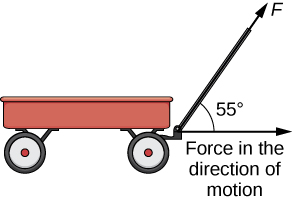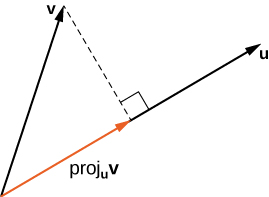| << Chapter < Page | Chapter >> Page > |
On June 1, AAA Party Supply Store decided to increase the price they charge for party favors to $2 per package. They also changed suppliers for their invitations, and are now able to purchase invitations for only 10¢ per package. All their other costs and prices remain the same. If AAA sells 1408 invitations, 147 party favors, 2112 decorations, and 1894 food service items in the month of June, use vectors and dot products to calculate their total sales and profit for June.
Sales = $15,685.50; profit = $14,073.15
As we have seen, addition combines two vectors to create a resultant vector. But what if we are given a vector and we need to find its component parts? We use vector projections to perform the opposite process; they can break down a vector into its components. The magnitude of a vector projection is a scalar projection. For example, if a child is pulling the handle of a wagon at a 55° angle, we can use projections to determine how much of the force on the handle is actually moving the wagon forward ( [link] ). We return to this example and learn how to solve it after we see how to calculate projections.

The vector projection of v onto u is the vector labeled proj u v in [link] . It has the same initial point as u and v and the same direction as u , and represents the component of v that acts in the direction of u . If represents the angle between u and v , then, by properties of triangles, we know the length of is When expressing in terms of the dot product, this becomes
We now multiply by a unit vector in the direction of u to get
The length of this vector is also known as the scalar projection of v onto u and is denoted by

Find the projection of v onto u.
Sometimes it is useful to decompose vectors—that is, to break a vector apart into a sum. This process is called the resolution of a vector into components . Projections allow us to identify two orthogonal vectors having a desired sum. For example, let and let We want to decompose the vector v into orthogonal components such that one of the component vectors has the same direction as u .
We first find the component that has the same direction as u by projecting v onto u . Let Then, we have
Now consider the vector We have
Clearly, by the way we defined q , we have and

Notification Switch
Would you like to follow the 'Calculus volume 3' conversation and receive update notifications?